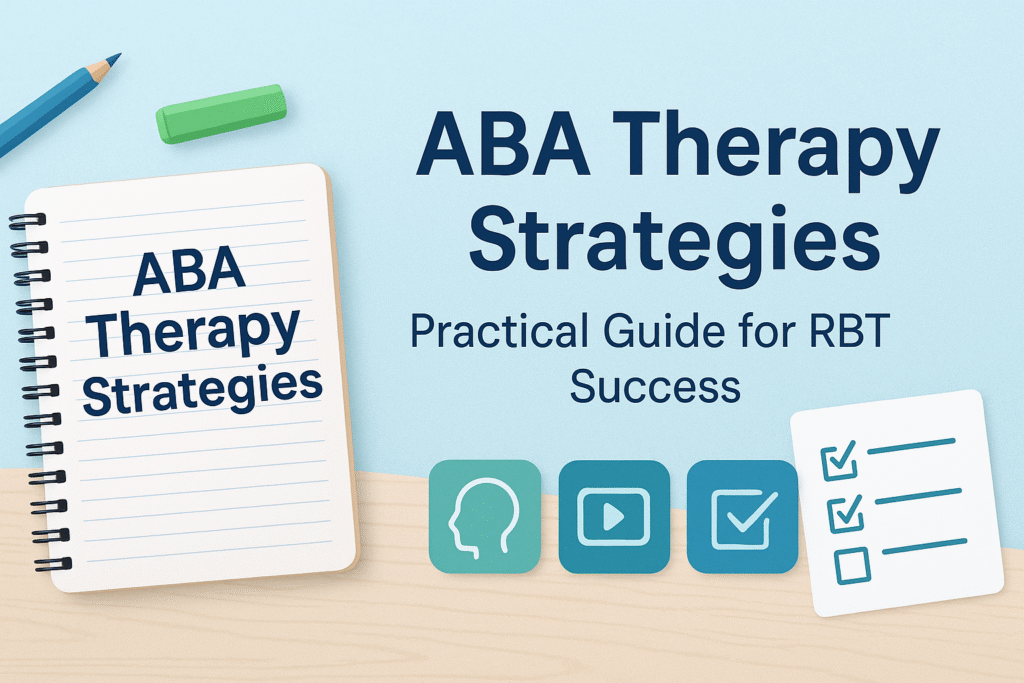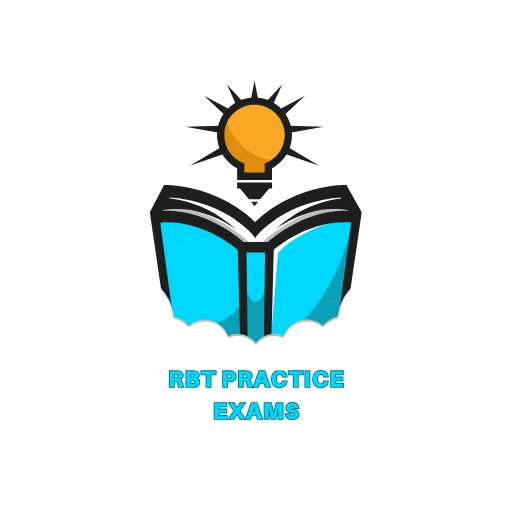Applied Behavior Analysis (ABA) therapy is a structured and evidence-based approach to teaching skills and shaping behavior. At its core, it relies on tested strategies that help people learn more effectively. If you’re preparing for your RBT exam or simply want to understand ABA better, it’s important to know the most widely used ABA therapy strategies and how they apply in real situations.
In this guide, we’ll walk through the essential strategies, why they matter, and how they support both clients and professionals in ABA therapy.
Table of Contents

What Are ABA Therapy Strategies?
ABA therapy strategies are practical methods used to teach skills, reduce challenging behaviors, and encourage positive habits. These strategies are grounded in the science of behavior and are applied in structured, step-by-step ways.
The Behavior Analyst Certification Board (BACB) defines ABA as the use of systematic techniques to improve socially significant behaviors. These strategies can help children with autism, individuals with developmental delays, and even adults looking to strengthen specific skills.
Core ABA Therapy Strategies Every RBT Should Know
- Positive Reinforcement
Positive reinforcement is the foundation of most ABA programs. When a desired behavior is followed by a reward, that behavior is more likely to happen again.
Example: A child receives praise or a small toy after completing a puzzle correctly.
This strategy is simple but powerful it builds motivation and creates a positive learning environment.
- Discrete Trial Training (DTT)
DTT breaks down skills into small, manageable steps. Each trial has a clear instruction, response, and consequence (reward or correction).
Example: Teaching colors by showing a red card, asking “What color is this?”, and reinforcing the correct answer.
RBT candidates often see DTT scenarios on the rbt practice test since it’s one of the most common teaching methods.
- Prompting and Prompt Fading
Prompts are cues or aids that help a learner perform a behavior. Over time, prompts are gradually reduced (faded) until the learner can act independently.
Types of Prompts:
Verbal prompts (instructions)
Gestural prompts (pointing)
Physical prompts (hand-over-hand guidance)
Effective RBTs must learn how to fade prompts smoothly—a key skill tested in the rbt mock test .
- Shaping Behavior
Shaping reinforces small steps that lead toward a larger goal. Instead of waiting for perfect performance, therapists reward gradual progress.
Example: Teaching a child to say “water” may start with rewarding the sound “wa” before requiring the full word.
- Functional Communication Training (FCT)
FCT teaches individuals to replace problem behaviors with functional communication.
Example: Instead of screaming for attention, a learner is taught to tap a button that says “help.”
This is vital because many challenging behaviors come from a lack of communication skills.
- Generalization of Skills
ABA strategies don’t stop at teaching a skill in one setting. Generalization ensures the skill is used across environments, with different people, and in new situations.
Example: A learner who practices greetings at home should also be able to greet peers at school.
- Behavior Intervention Plans (BIPs)
When problem behaviors occur, a Behavior Intervention Plan is developed. This outlines triggers, prevention methods, and replacement behaviors.
RBTs often support BIPs under supervision, making this an important part of exam preparation.
Why ABA Therapy Strategies Work
The strength of ABA lies in consistency and data-driven decisions. Strategies are not random they are tested, measured, and adjusted based on results.
For RBT candidates, understanding these strategies is crucial. The exam measures your ability to apply them correctly, which is why practicing with a rbt practice exam is one of the best ways to prepare.
FAQs About ABA Therapy Strategies
What are the main ABA therapy strategies used in practice?
Some of the most common strategies include positive reinforcement, DTT, prompting, shaping, FCT, and generalization.
How do ABA strategies support children with autism?
They provide structured teaching methods that build communication, social, and daily living skills in a predictable, rewarding way.
Do RBTs need to master every ABA strategy?
Yes, RBTs are expected to apply core strategies under supervision. Mastery helps ensure consistency in therapy.
What’s the best way to prepare for ABA strategies on the RBT exam?
Take multiple practice tests, review ABA principles, and apply strategies in real or simulated settings. Start with a free rbt practice test .
Putting ABA Strategies Into Practice
It’s not enough to read about ABA therapy strategies you need to apply them. RBT candidates should focus on hands-on practice, role-play scenarios, and test simulations. The more you practice reinforcement, prompting, and shaping, the more natural they become in real therapy sessions.
Whether you’re working toward certification or supporting someone at home, these strategies can make learning smoother and more rewarding.
Conclusion:
Build Confidence with ABA Therapy Strategies
ABA therapy strategies are practical, proven methods for teaching and shaping behavior. From reinforcement to communication training, each strategy plays a role in helping individuals grow. For aspiring RBTs, mastering these strategies is essential for both exam success and professional practice.
Start building your confidence today take your first step with a rbt practice exam and see how well you understand these ABA therapy strategies.
